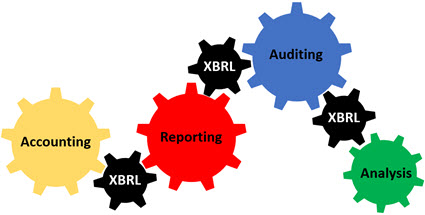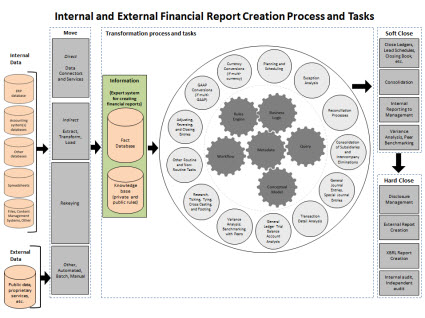Accounting, Reporting, Auditing, and Analysis in a Digital Environment
Moving to more modern approaches to accounting, reporting, auditing, and analysis that are more appropriate for the digital evironment of the fourth industrial revolution is progressing slower than I would have expected. Perhaps it is slower than you would have expected also. Maybe not.
Change will ultimately come.
German physicist Max Planck pointed out that science advances "one funeral at a time". Or more precisely: (Wikiquote)
“A new scientific truth does not triumph by convincing its opponents and making them see the light, but rather because its opponents eventually die, and a new generation grows up that is familiar with it.”
Perhaps a bit morbid, but true. The guy in this video says the same thing at minute 30:10. Paradigm shifts are hard for people to make.
Email did not make 100% of snail mail go away. Paper-based financial reporting will likely always exist. A digital alternative to a paper-based or e-paper general purpose financial report does provide value. But to provide value, it has to work correctly. Well, I know that it can work correctly.
Don't take short cuts. Yes, it can be tough to balance short-term realities and the longer-term objectives.
The graphic below shows visually the role that XBRL plays in connecting accounting, reporting, auditing, and analysis processes:
(Click image for larger view)
This video, Digital Financial Reporting, put out by the Australian SBR project explains the two approaches to implmenting digital financial reporting: built-in and bolt-on. Bolt-on simply adds more work. Built-in takes more time and effort to implement, but it leads to improved process effencicy.
These are the sorts of processes and tasks that get improved:
(Click image for larger view)
This narrative helps you understand the moving pieces of accounting, reporting, auditing, and analysis in a digital environment.
In the first and second industrial revolutions, water power, steam power, and electrical power contributed to automating many manual tasks. In the third and our current fourth industrial revolution computers and computer software will help automate many cognitive tasks.



Reader Comments